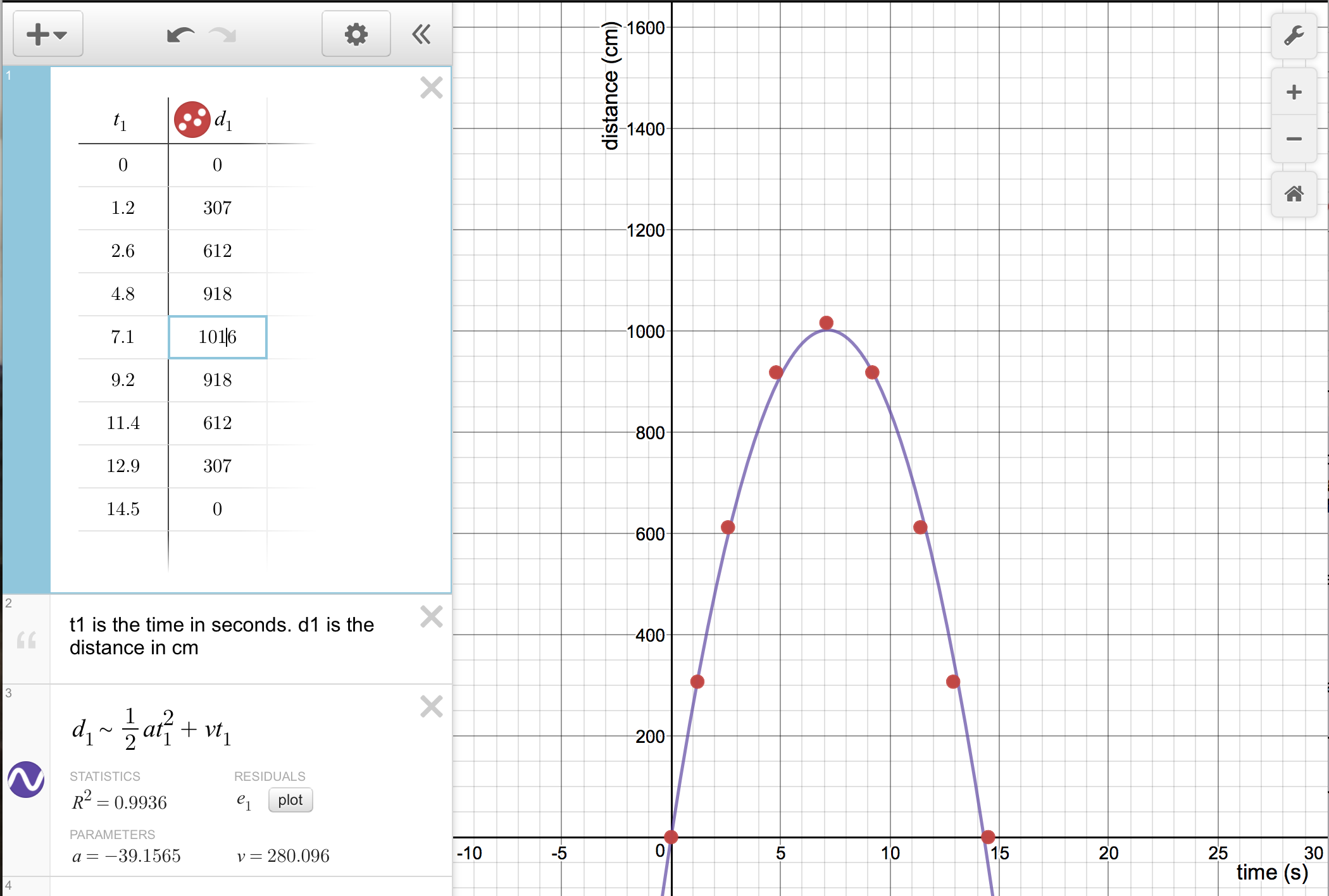- How does density tell us about whether a bar of soap will float or sink?
- A RipStik moved at three different velocities (speeds). The data was gathered in the tables and plotted on the graph seen below.

- __________ __________ Calculate the velocity (speed) for the first table (the top line).
- __________ __________ Calculate the velocity (speed) for the second table (the middle line).
- __________ __________ Calculate the velocity (speed) for the third table (the lowest line).
- __________ Which RipStik run is the fastest: top, middle, or bottom line?
- __________ Which RipStik run is the slowest: top, middle, or bottom line?
- __________ __________ If the RipStik continued with the speed calculated from the first table, how far would the RipStik travel in 40 seconds?
- __________ __________ If the RipStik continued with the speed calculated from the first table, how long in seconds for the Ripstik to travel 4000 centimeters?
- Explain the conservation of energy using gravitational potential energy and kinetic energy as demonstrated during fourth week.
- Explain the conservation of momentum as demonstrated in experiments during the fourth week.
- A RipStik was ridden at an initial velocity v across a starting line at distance d = 0 centimeters up a slope. The RipStik decelerated, came to brief rest, and then accelerated back down the slope passing the starting line at 14.5 seconds as shown on the graph. Use the information in the Desmos graph and regression analysis to determine the acceleration a and initial velocity v of the RipStik. Times are in seconds, distances in centimeters.

- acceleration a: __ __________ __________
- initial velocity v: __________ __________
- __________ __________ After a time t1 of eleven seconds, what will be the distance of the RipStik?
- __ __________ __________ After a time t1 of twenty seconds, what will be the distance of the RipStik?
- Write out Newton's first law of motion.
- Write out Newton's second law of motion.
- Write out Newton's third law of motion.
- When running down Kaselehlie street cars will sometimes pull out of side streets and driveways directly in front of me. Which of Newton's laws causes me to collide with the car?
Why?
- A United 737-800 has two CFM Intl. CFM56-7B27 engines each producing 121.4 kiloNewtons of thrust (force). The empty weight of a 737-800 is 41,413 kg. Which of Newton's laws would be used to calculate the acceleration of the plane?
- __________ _________Use the values for the 737-800 given above to calculate the acceleration of a 737-800.
- ____________________ which variable had the most effect on the force of friction?
- Do hot objects cool off linearily and, if not, how do hot objects cool?
- Temperatures in Celsius:
- _________℃ What is the temperature of a mix of melting ice and water?
- _________℃ What is the temperature at which solidified coconut oil melts?
- _________℃ What is the typical indoor temperature in Pohnpei?
- _________℃ What is the core temperature of the healthy living human body?
- _________℃ What is the temperature of boiling water?
- _________℃ What is the temperature difference between a black shirt and a white shirt in the sun?
- Which way does latitude run on the planet Earth?
- Which way does longitude run on the planet Earth?
- On Wednesday you started the search for Lee Ling at the south faculty office, E 158° 09.612'.
- _________ _____ Lee Ling was at E 158° 09.424'. Calculate the difference in arcminutes between the south faculty office and Lee Ling.
- _________ _____Use the difference in arc minutes from part a) and the experimental value of 1847 meters per arcminute of longitude here on Pohnpei to calculate the distance in meters you had to walk to the East to get to Lee Ling's location.
- ___________________ If you were to travel straight East from Pohnpei to the prime meridian, what COUNTRY would you be in when you reached the prime meridian?
- ___________________ Which way is the equator from here on campus, towards Kitti or towards Kolonia?

